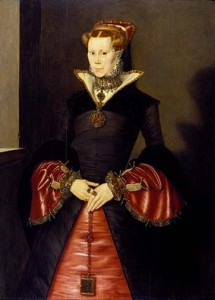
At 3pm on Saturday 30th September, Mary I left the Tower of London to the sound of guns firing and church bells ringing. This was her coronation procession and the next day she would be crowned Queen of England at Westminster Abbey.
You can read a primary source account of Mary’s coronation in The chronicle of Queen Jane, and of two years of Queen Mary, and especially of the rebellion of Sir Thomas Wyat – click here to read (pages 28-30) and you can read my article from 2011 about it at Mary I’s Coronation Procession.